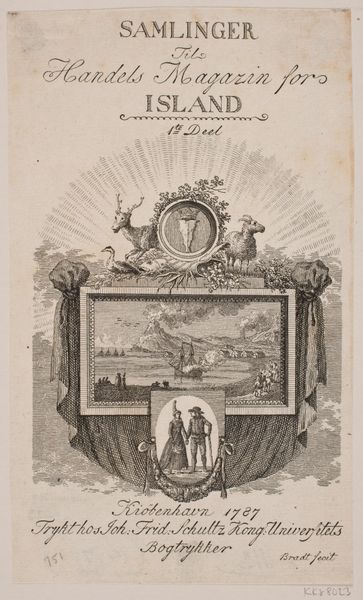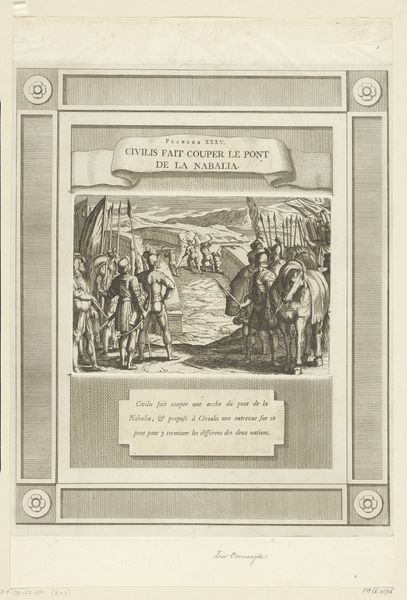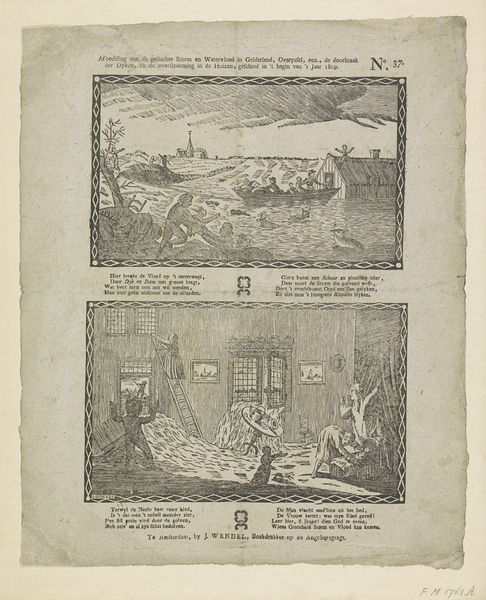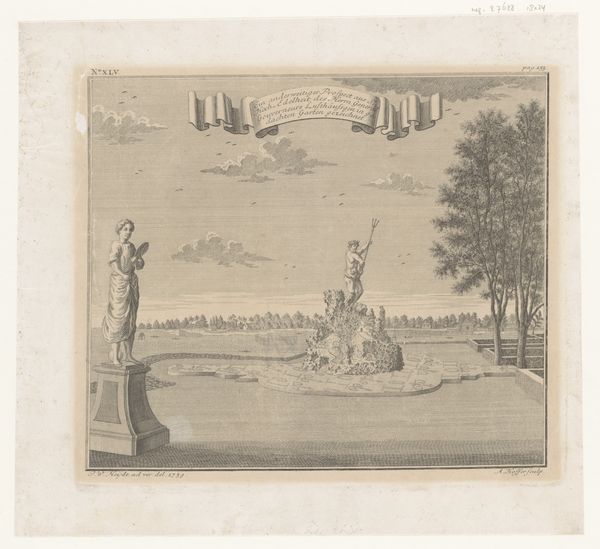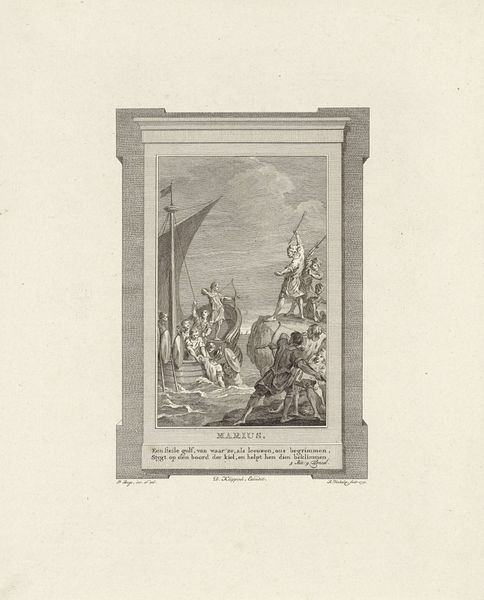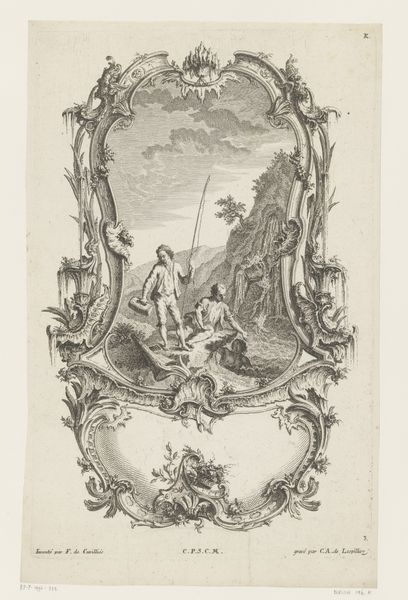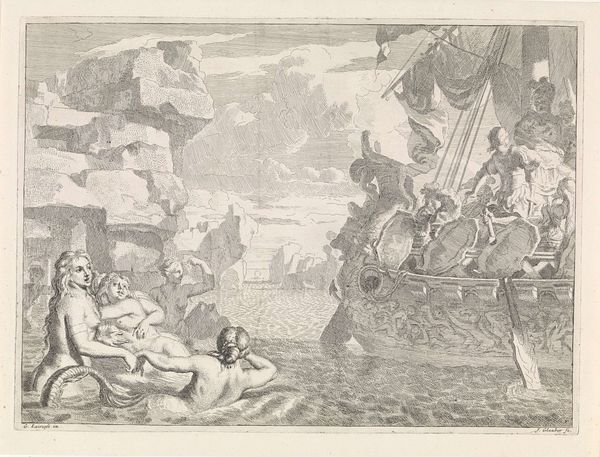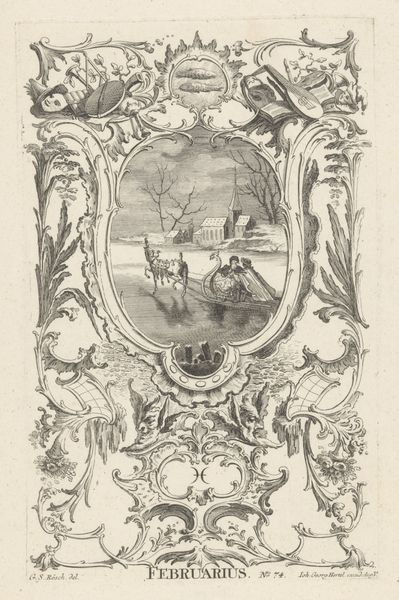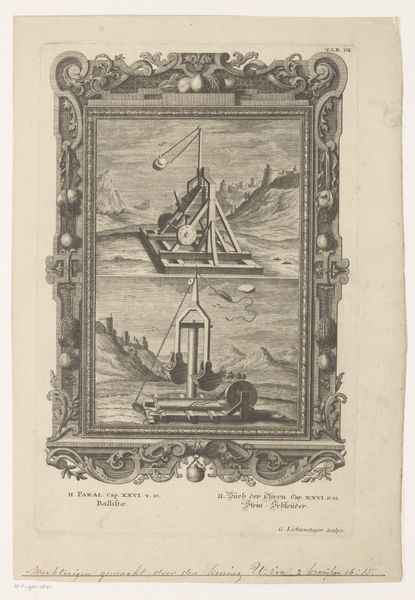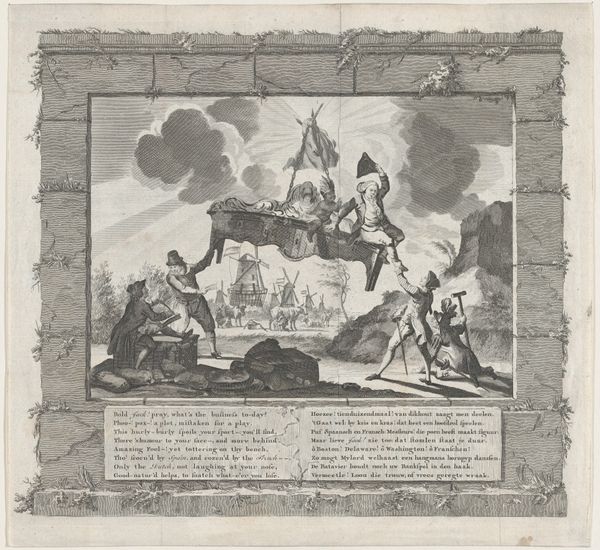
Study for Decoration of the Obelisk at Port-Vendres 1783
0:00
0:00
Dimensions: 9 3/16 x 14 3/16 in. (23.3 x 36 cm)
Copyright: Public Domain
Curator: This engraving by Charles de Wailly, dated 1783, is titled "Study for Decoration of the Obelisk at Port-Vendres," currently housed at the Metropolitan Museum of Art. Editor: My first impression is… theatrical. The subdued blue hues give it an almost ghostly, memorial-like quality. Are we looking at a proposed design for a monument? Curator: Precisely. It seems to represent a maritime triumph. The prominent ships suggest naval power and trade connections—consider the labor that would have gone into creating those vessels. Editor: It is very much an overt celebration of royal power through maritime prowess. Notice the inscription: “… trophy erected to the glory of the king by the gods of the two seas.” This work's inherent politics can't be dismissed. Curator: Absolutely. The material realities of maritime activities underpinned political ambition. From shipbuilding to transatlantic trade and colonization, all depended on intense human labor and access to specific raw resources, many pilfered from colonized regions. Editor: And the depiction of Neptune and another sea god reclining at the base – classically rendered and slightly erotically charged – are clear personifications of the Mediterranean and Atlantic rendered as servants to the French crown. The use of allegorical figures reminds us of the cultural institutions and artistic conventions that helped build this national mythology. Curator: It’s fascinating how De Wailly presents it as a study, emphasizing the process of design itself, hinting towards a whole apparatus needed to produce these grand celebrations of state power and also, making sure the proposed construction suits a particular place - the port itself. What building materials are readily available, how easily transported. All factors. Editor: You are right. There’s a fascinating tension here between the drawing as a preliminary design—meant for political approval—and its own existence as an artifact circulated within artistic and intellectual circles. Prints like these solidified architectural visions. Curator: So it circulated these imperial narratives, but also showcased the sheer skill of the engraver and the artistic workshop who created the image in the first place. It gives an insight into the different levels of skill in late 18th Century print production and their material circumstances, from access to specialist inks and plates, through to the cost of apprenticeship. Editor: I think it underscores how art and political ideology were deeply intertwined in pre-revolutionary France, and how architecture – even unrealized – became a tool of propaganda. Curator: This engraving is far more than an aesthetic object; it's an encapsulation of material, labor, political agenda, and historical context all in one image. Editor: It is indeed a window onto the intertwined world of art, politics, and power in late 18th-century France.
Comments
No comments
Be the first to comment and join the conversation on the ultimate creative platform.
